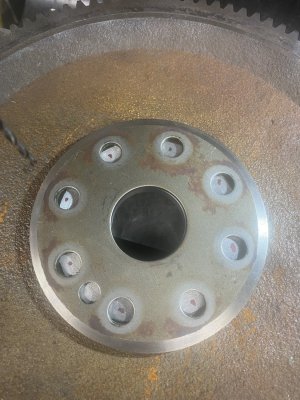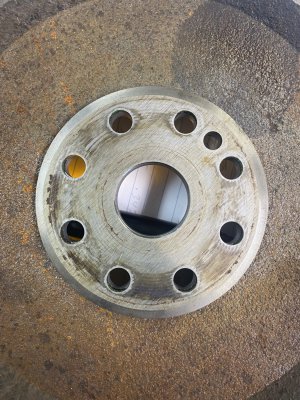- Joined
- Mar 26, 2018
- Messages
- 8,407
Yes, I have a DRO with the bolt circle option. I ran through it yesterday. I think I have it perfectOK I'll ask the obvious.....does your mill DRO have a bolt circle function? It's an even number of holes, so the holes opposite one another are the diameter of the bolt pattern. Snug fitting pins, and measure the distance between the outside of the pins and subtract the diameter of one of the pins= bolt circle diameter. Of course this is all out the window if the bolt holes aren't equally spaced( but this can be checked by pinning and measuring adjacent holes pair by pair to confirm they're equal ), or you happen to have a DRO that doesn't do bolt circles!
I hope






